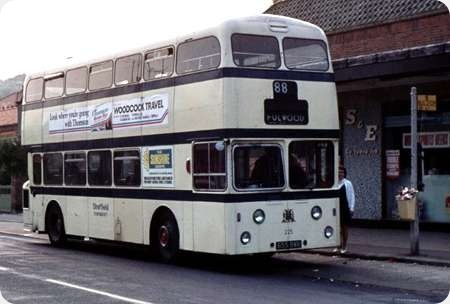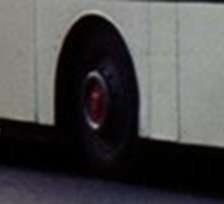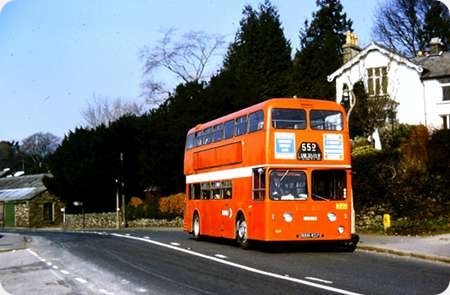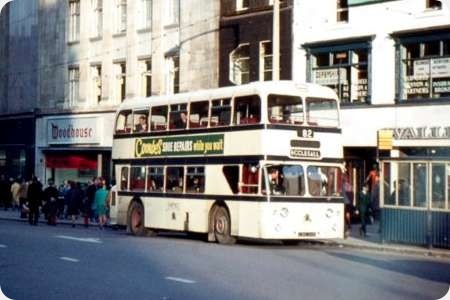Sheffield Corporation – Leyland Atlantean – 655 BWB – 225
Sheffield Corporation
1962
Leyland Atlantean PDR1/1
Metro Cammell H44/33F
This bus was one of a batch of nine supplied new to the B fleet as fleet number 1355. This batch were extensively used from new on service 41 to Hackenthorpe where there was a large new housing development. They were the first rear engined double deckers for the B fleet and were the final batch with rear destination displays before reversion to rear route numbers only.
Following the absorption of the B fleet in 1970, the bus was renumbered to 225. Here it is seen at Fulwood terminus of service 88 which replaced the former tram route. Fulwood was the elegant part of the City! The date was 26th August 1973, the bus looks smart and as always the Sheffield livery helped to disguise the box shape of early rear engined deckers. It carries the final pre PTE fleetname introduced I think by General Manager Noel Macdonald. It still has a full set of Leyland wheel embellishers although eleven years old. Note the Sheffield bus stop flag, quite distinctive in the days before the nationally standardised type.
Photograph and Copy contributed by Ian Wild
03/08/15 – 16:06
I always thought the original Atlantean and Fleetline designs from the MCW group had a certain symmetry that was lost with the later moves to graft on curved or vee windscreens and peaked domes which always looked like a bit of a lash up to me. Yes the design was ‘boxy’ but it was simple seemed to work. The PRV/Roe early incarnations though were absolutely dreadful with the top heavy Bridgemaster upper deck characteristics. Of all the body builders on the early rear-engined buses only Alexander really got it right with the Glasgow design.
Philip Halstead
04/08/15 – 06:54
I agree with Philip regarding the style of the early MCW Atlantean/Fleetline bodywork.
I have always thought it to be a rather good, quite attractive design which was most appropriate for the then ground breaking rear engined buses.
David Slater
05/08/15 – 06:20
But are these wheels with their embellishers red- as they should be- or blue, reputed to have been in "celebration" of a rare & brief Conservative takeover of the city council in 1968? Bit of history here.
Joe
Best I can do I’m afraid.
06/08/15 – 05:49
Both red AND blue would you say? Red centre on a blue wheel?
Joe
06/08/15 – 15:37
I lived at Hackenthorpe when these were introduced. What a revelation they were replacing the AEC batch 190 -198. 1261-1263 + Leylands 159-161. At eve rush hour when full standing by the driver you would marvel at the gear changing (a lollipop in a fag pkt). When new as joint omnibus fleet they did not carry the cities coat of arms! When did 225 receive it? Must say it wasn’t long before I missed the wonderful exhaust note of the AECs!!!
NB I am collecting photos of any buses on the 41 route in 50s/60s if anyone can help?
David Grant
07/08/15 – 17:06
I preferred the Park Royal body from around the same period.
Andy Fisher
02/09/15 – 07:06
I also lived at Hackenthorpe when 1350-1358 were new.
The upper deck of 1357 was totally destroyed in a fire in the late 60s, while operating on the 41 to Hackenthorpe. It received a new Park Royal body and re-entered service in 1968.
Martyn Else
Quick links to the - Comments Page - Contact Page - Home Page




